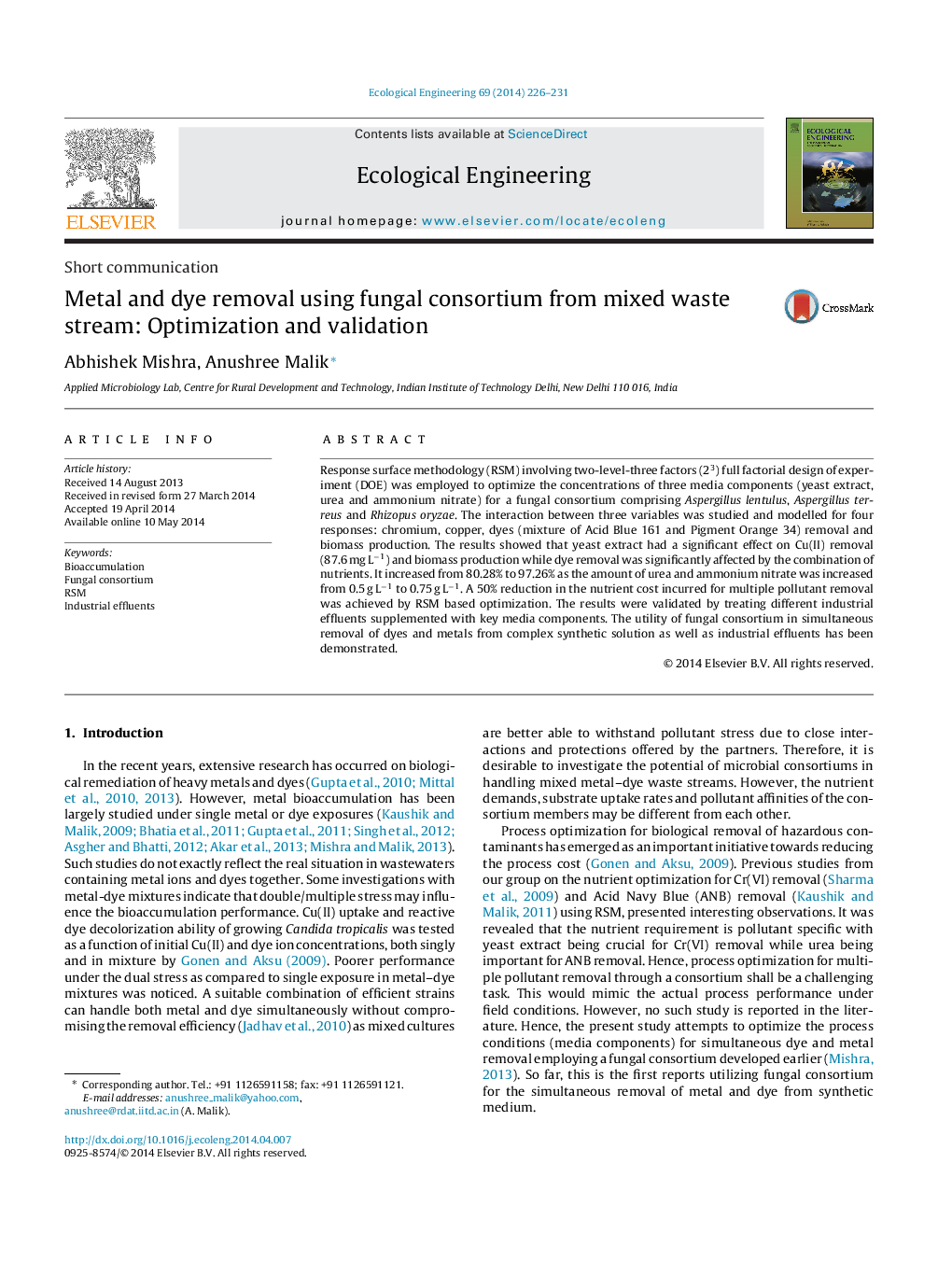| کد مقاله | کد نشریه | سال انتشار | مقاله انگلیسی | نسخه تمام متن |
|---|---|---|---|---|
| 4389396 | 1618030 | 2014 | 6 صفحه PDF | دانلود رایگان |
• First media optimization study to remediate mixture of metal & dye using fungal consortium.
• Maximum removal of Cr(VI) (100%), Cu(II) (91%) & dye mixture (98%) from synthetic solutions.
• 50% cost reduction in growth media after optimization.
• Significant removal of metals and dye from different industrial effluents using optimized media.
Response surface methodology (RSM) involving two-level-three factors (23) full factorial design of experiment (DOE) was employed to optimize the concentrations of three media components (yeast extract, urea and ammonium nitrate) for a fungal consortium comprising Aspergillus lentulus, Aspergillus terreus and Rhizopus oryzae. The interaction between three variables was studied and modelled for four responses: chromium, copper, dyes (mixture of Acid Blue 161 and Pigment Orange 34) removal and biomass production. The results showed that yeast extract had a significant effect on Cu(II) removal (87.6 mg L−1) and biomass production while dye removal was significantly affected by the combination of nutrients. It increased from 80.28% to 97.26% as the amount of urea and ammonium nitrate was increased from 0.5 g L−1 to 0.75 g L−1. A 50% reduction in the nutrient cost incurred for multiple pollutant removal was achieved by RSM based optimization. The results were validated by treating different industrial effluents supplemented with key media components. The utility of fungal consortium in simultaneous removal of dyes and metals from complex synthetic solution as well as industrial effluents has been demonstrated.
Journal: Ecological Engineering - Volume 69, August 2014, Pages 226–231
